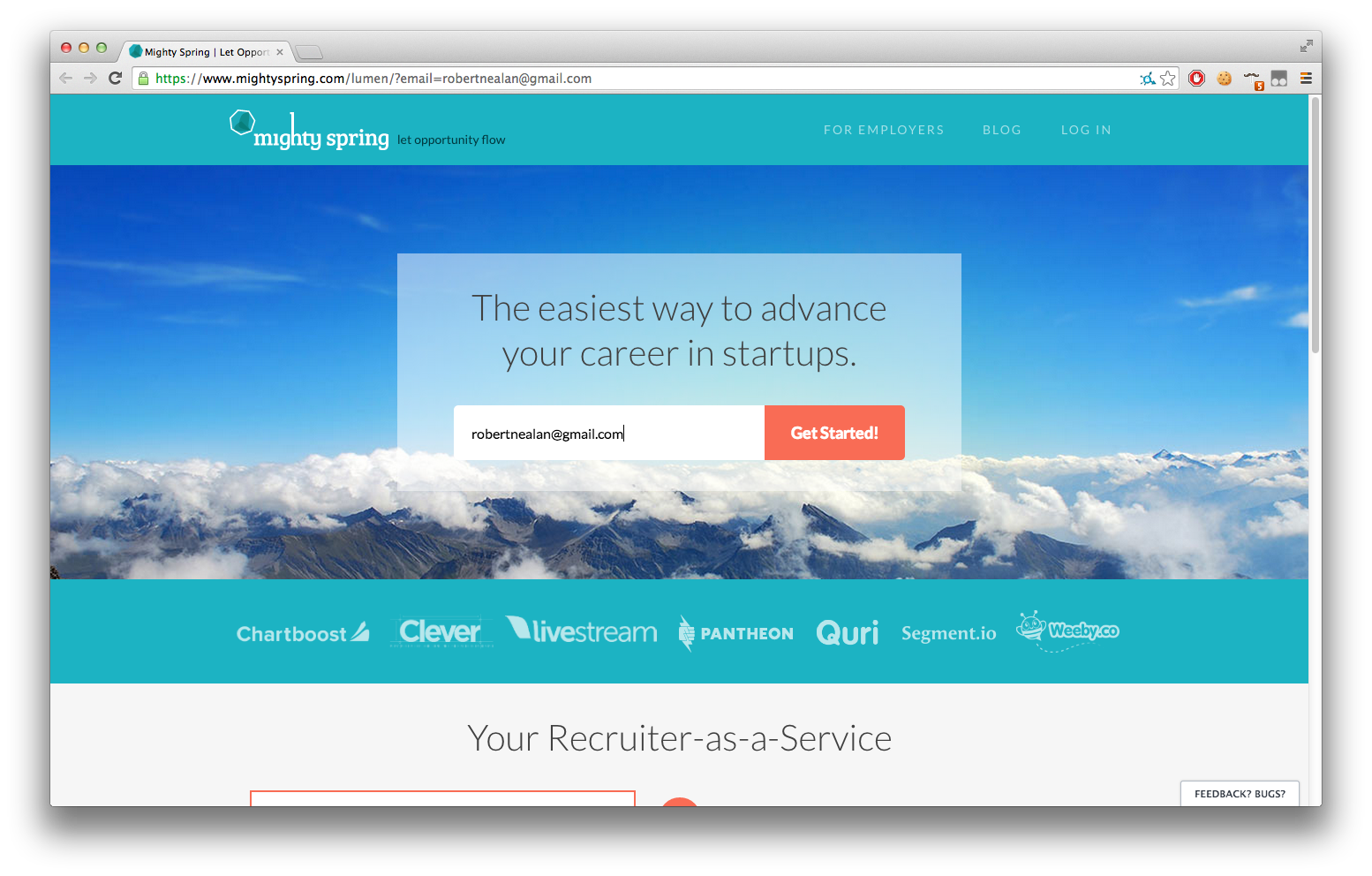Craft Your First Impression
A few weeks ago I received a cold email from a local San Francisco startup called Mighty Spring asking me to demo their product. If you work in tech and have an internet presence you get used to receiving these things all the time (and generally saving them to the metaphorical circular filing cabinet[1], but the simplicity and attention to details in this particular case left such a great first impression that I felt it's worth sharing.

Right off the bat they address me by name. This might seem like an obvious detail (especially given how easy it is to use mailing list merge tags), but you'd be surprised how emails I receive that even bother to do this much. Even better, he immediately tells me how he happened upon my contact info:
"I just found your profile on Github..."
He's no longer a stranger who found my email through some shady email list purchase but instead a compadre who at the very least knows the existence of Github – a major nexus of the developer community and something that I maintain a profile for the purpose of people finding my work[1:1]. The second half, "...and am hoping to get your feedback on my startup, Mighty Spring," doesn't yet try to sell me on why this startup is going to change my life, but instead appeals to my emotion and asks for my help.
*slow clap*
With only 21 words they've already addressed me by my name, told me how they found me, and asked for my help; and, in the next 33 words they manage to tell me what the startup is, how it's going to benefit my life, and oh yeah, by the way – it's free. If this is a product that has any appeal to a potential customer (most people who work full time positions), at this point I have to imagine their only question would be, "Why wouldn't I sign up?"
A Little Magic
Lastly, this isn't just a normal invite, this is a beta invite. That in itself unfortunately isn't that meaningful since the early days of Gmail save in special circumstances[1:2], but again when I clicked the link I didn't just land up on a signup page, but instead landed on a page that already knew who I am.

At first I was confused, but then I realized they used the same trick I used to rickroll all my friends back in the day. While the link appears to be https://www.mightspring.com/lumen/, in reality that's the text of the anchor tag and the real URL is: https://www.mightyspring.com/lumen/?email=robertnealan@gmail.com. This is the oldest trick in the book, but really can add a hint of magic to the experience for those who either don't code for a living or just aren't paying that close of attention. It's the little details that make a big first impression.
All in all, the email took me about 7 seconds to read at a leisurely pace, and I'm already sold on trying it out. While I personally don't have much use for a passive recruiting given that I'm happily self-employedd at Atomi Design, I'll still be giving it a go to see how well they follow through on their promises and whether it's worth recommending to friends.
Remember – you only have one chance to make a first impression, and with this style of email outreach you have the advantage of being able control the situation. Take your time to craft your message and test it out before going public. Think it's good? Wait a day and read it again. Good now? Pitch it to the next person who gets on the elevator and see how they respond. Lastly, be concise. Time is money, and most of us have a severe shortage of time these days. If you send a lengthy essay about your startup chances are most people aren't going to read it.
Thanks owed to Clement Poisson for proofreading.
